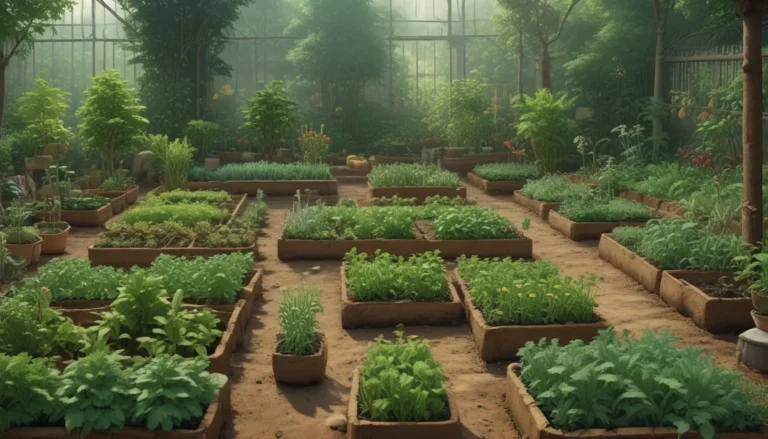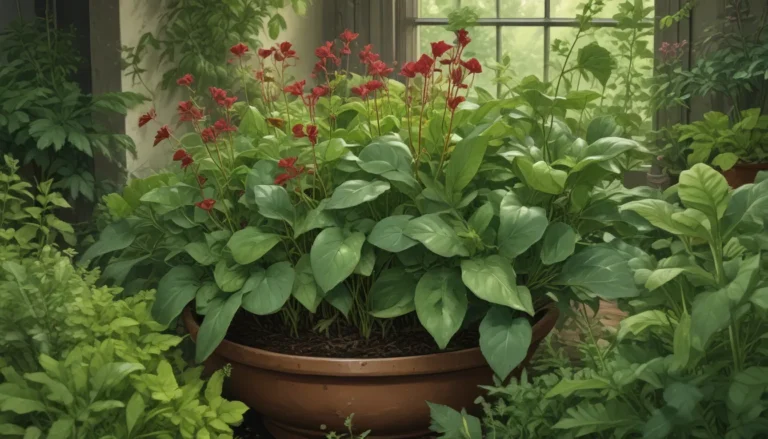A Comprehensive Guide: Planting and Growing Roma Tomatoes

If you’re looking to add a burst of tangy flavor to your culinary creations, Roma tomatoes are a fantastic choice. Known for their rich taste and meaty flesh, these low-moisture paste tomatoes are a favorite among home gardeners and canning enthusiasts alike. In this detailed guide, we’ll take you through everything you need to know about planting and growing Roma tomatoes, from selecting the right cultivars to managing pests and diseases. Let’s dig in!
All About Roma Tomatoes
While the name ‘Roma’ may sound Italian, these tomatoes are actually an American hybrid created by the USDA’s Agricultural Research Service in 1955. They are a cross between the famous ‘San Marzano’ heirloom cultivar and ‘Pan America.’ Roma tomatoes are prized for their oblong, egg-shaped fruits that range in color from bright red to yellow. They have a dense, gel-less texture, making them ideal for cooking and preserving.
Key Characteristics of Roma Tomatoes:
- Tangy, rich taste
- Meaty, dense-walled flesh
- Low moisture content
- Few seeds
With their versatile flavor profile and versatile uses, Roma tomatoes are perfect for making ketchups, sauces, salsas, and more. They also freeze well, allowing you to enjoy their fresh taste year-round.
Starting from Seed
To grow Roma tomatoes successfully, it’s essential to start with healthy seedlings. Begin by planting seeds indoors six to eight weeks before the last frost date in your area. Once the seedlings reach about six inches in height, gradually acclimate them to outdoor conditions before transplanting them into your garden.
If seed propagation seems daunting, you can also opt for purchasing seedlings from local nurseries or garden centers. This ensures that you start with robust plants ready for the growing season.
How to Plant Roma Tomatoes
Proper planting techniques are crucial for the success of your Roma tomato plants. Here’s a step-by-step guide on how to plant them:
When to Plant:
- Wait until after the last frost date
- Ensure nighttime temperatures stay above 50°F
- Use cloches or covers if weather turns cold
Where to Plant:
- Choose a sunny location with at least 6-8 hours of direct sunlight daily
- Ensure well-drained loamy soil with a pH level between 6.2-6.5
- Incorporate organic matter like compost or aged manure for fertility
Spacing and Support:
- Space determinate plants 12-24 inches apart, while indeterminate varieties need 2-3 feet between plants
- Provide support with cages, stakes, or trellises
- Consider growing in raised beds, containers, or garden plots
Taking these steps will help your Roma tomato plants thrive and produce bountiful harvests throughout the season.
Roma Tomato Plant Care
Caring for Roma tomato plants involves regular maintenance to ensure healthy growth and fruit development. Here are some essential care tips:
- Water deeply once a week to prevent issues like blossom end rot
- Mulch around plants to retain moisture and deter weeds
- Pinch out suckers to redirect plant energy into fruit production
- Feed with a balanced fertilizer every two weeks once flowers appear
- Regularly inspect plants for signs of pests and diseases
By following these care practices, you can help your Roma tomatoes grow vigorously and produce delicious fruits for your kitchen.
Cultivars to Select
When choosing Roma tomato cultivars, consider factors like flavor, fruit size, and disease resistance. Here are some popular varieties to explore:
- ‘Cherry Roma’: Ideal for snacking and salads, with small, sweet fruits
- ‘La Roma III’: A hybrid variety suitable for canning, sauces, and paste
- ‘Orange Roma’: Adds a pop of color to dishes with its sweet, orange fruits
- ‘Roma Grande’: Perfect for extreme temperatures, with firm, meaty fruits
- ‘Roma VF’: A classic heirloom with mild-tasting, red fruits
- ‘Yellow Roma’: Offers golden-yellow fruits with a subtly sweet flavor
Each cultivar has its unique characteristics, allowing you to experiment with different flavors and textures in your recipes.
Managing Pests and Diseases
Like all tomato plants, Roma tomatoes are susceptible to pests and diseases that can impact their growth and fruit production. Common pests include aphids, hornworms, and stink bugs, while diseases like blight and blossom end rot can affect plant health. Implementing integrated pest management strategies and practicing good garden hygiene can help prevent and control these issues.
Harvesting Roma Tomatoes
Knowing when and how to harvest Roma tomatoes is essential to ensure peak flavor and quality. Look for vibrant red fruits that are slightly soft to the touch before picking them from the vine. Use a gentle twisting motion to detach the tomatoes or cut them with shears to avoid damaging the plants. After harvesting, clean and store the tomatoes properly to extend their shelf life and maintain their freshness.
Storing and Preserving
To keep your Roma tomatoes fresh and flavorful, store them at room temperature away from direct sunlight. Refrigeration is suitable for long-term storage, but allow the tomatoes to come to room temperature before consuming for the best taste. If you have a surplus of tomatoes, consider preserving them through canning, freezing, or drying methods. Each preservation technique offers unique benefits and allows you to enjoy homegrown Roma tomatoes throughout the year.
Roma Tomato Recipe Ideas
From bruschetta to pasta sauces, Roma tomatoes are a versatile ingredient that can elevate your culinary creations. Here are some recipe ideas to inspire your next meal:
- Homemade Tomato Basil Bruschetta: A classic appetizer with fresh flavors and crunchy texture
- Einkorn Pastry with Tomato, Ricotta, and Basil: A savory dish that combines rich tomatoes with creamy ricotta
- Sweet and Savory Tomato Jam: A zesty relish that pairs well with meats, cheeses, and sandwiches
Experiment with different recipes to discover new ways to enjoy the robust flavors of Roma tomatoes in your dishes.
Quick Reference Growing Guide
To help you grow Roma tomatoes successfully, here’s a quick reference guide with key information:
- Plant Type: Annual vegetable
- Water Needs: High
- Native to: America
- Hardiness (USDA Zone): 3-11
- Season: Summer
- Exposure: Full sun
- Time to Maturity: 70-80 days
- Spacing: 2 feet
- Height: 2-4 feet (determinate); 6-8 feet (indeterminate)
Use this guide as a handy reference throughout the growing season to ensure optimal care for your Roma tomato plants.
Plum Perfect for Stocking the Pantry
With their rich taste, meaty texture, and low seed count, Roma tomatoes are a versatile ingredient that can enhance a wide range of dishes. Whether you’re canning, cooking, or enjoying them fresh, these tomatoes are a pantry staple that every gardener should consider growing. Share your Roma tomato growing experiences in the comments below and stay tuned for more helpful tips on gardening and plant care.
If you’re looking to explore other tomato varieties for your garden, check out these guides for more inspiration:
– 15 of the Best Canning Tomatoes You Should Grow
– 21 of the Best Heirloom Tomato Varieties for the Garden
– 17 of the Best Cherry Tomatoes to Plant in Your Garden
Happy gardening and happy cooking with your homegrown Roma tomatoes!





